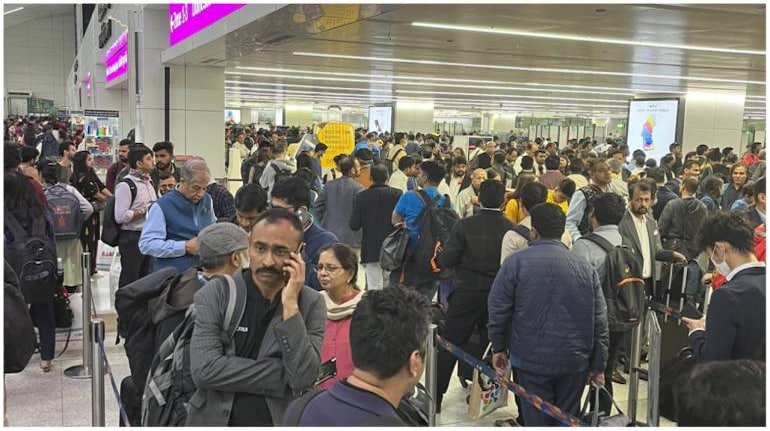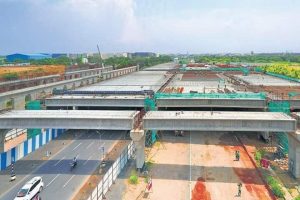The government has asked the Delhi airport developer to demolish structures if needed, in order to create more space for security gates and cut delays being caused to air passengers.
Flyers have continued to share their travel woes on social media showing chaos and overcrowding at the entrance as well as security queues at T3, which is Delhi airports international terminal but caters to some domestic flights as well.
At a high-level meeting chaired by Home Secretary Ajay Kumar Bhalla on Thursday, aviation and security officials assessed that the security check was a major bottleneck, which was leading to congestion in the airport. Officials said that after the meeting, instructions have been relayed to create more space for security infrastructure.
“The CISF office in T3 has been demolished. In its place, more ATRS (assisted tray retrieval system) are being installed,” CNN-News18 cited a senior CISF officer as saying.
Officials said the Delhi International Airport Ltd, which operates the Delhi airport, has been asked to demolish its lounge this week to create more space for security gates.
The number of ATRS is not enough to cater to the sharp increase in the number of flights and this is one of the main causes of delay in security clearance. The current security setup is geared to handle 180 passengers per hour per belt and the infrastructure needs to be increased to cater to the exponential increase in peak hours, a security official pointed out.
The number of CISF officials deployed for security checks has also been increased and their number will go up further in the coming days, Civil Aviation Minister Jyotiraditya Scindia said on Wednesday.
According to officials, immigration has also been identified as an area of concern that leads to congestion. Sources said 30 percent of immigration counters were currently unoccupied. The IB is reported to have given the assurance at the meeting that all immigration counters will be manned to tide over the current holiday season and the overcrowding.
The number of flights in peak hours were also being reduced.
At least five morning flights at T3 have been diverted to other terminals or rescheduled for non-peak arrival and departure.
Officials also studied the Bengaluru and Mumbai airports in an effort to decongest the Delhi airport, and presented some best practices.
The meeting took place two days after civil aviation minister Jyotiraditya Scindia’s visit to T3. Also present at the meeting were DG CISF, DG Bureau of Civil Aviation Security, senior officers of Intelligence Bureau, representatives from DIAL, as well as other officials from aviation and home ministries.
Aviation Minister Jyotiraditya Scindia on Wednesday issued a statement saying that all the concerned agencies are taking action reduce congestion at all major airports.
“Congestion at entry points and check-in counters at T3 has eased. 4 additional X-Ray machines have been added at the Security Hold Area; display boards showing wait times have come up. Deployment of CISF manpower has already kick-started, and will progressively increase in the next few days,” his statement said.
Scindia said the aforementioned steps will be emulated at the Bengaluru and Mumbai airports as well.
Yesterday, two additional X-RAY machines were operationalised at Bengaluru airport.
“India houses the third largest aviation market, and with that, we must also strive to be the best service providers. A lot is being done today, and much more will be done to brace for the future. A strong Rs 98,000-crore capex for airports is in the pipeline. Civil aviation is expanding its reach beyond the metros. There is a lot of potentials, and the unleashing of animal spirits has only begun,” Scindia said.




















